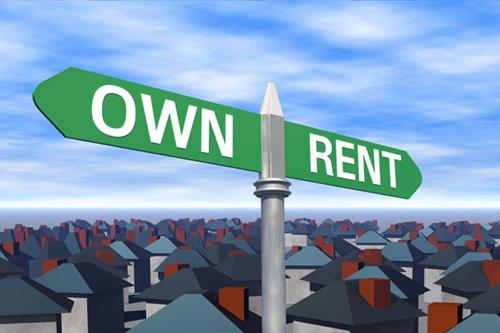3/14/2024
| SHARE
Posted in Financial Health by Vanguard Realty | Back to Main Blog Page

Renters face daunting barriers in their attempts to build wealth as they’re forced to devote an increasing share of their income to keeping a roof over their head, said an RBC report out Thursday.
The report by economist Carrie Freestone adds to a growing body of research painting a stark picture of the wealth divide between renters and homeowners.
Homeowners have seen their net worth grow from nine times household disposable income to 13 times since 2010, while for renters, net wealth grew from three to 3.5 times over the same period.
And while in 1999, renters devoted about 25% of take-home pay to housing costs compared with 23% for homeowners, in 2022 renters spent 29% on housing compared with 21% for homeowners.
The gap has widened even though renters’ incomes have risen at the same pace as homeowners, said Freestone. Meanwhile, homeowners are also accumulating home equity with their housing payments.
Last year was even worse for renters, who went from higher savings rates during the pandemic to not having enough to cover the bills, according to RBC.
Renters collectively spent nearly nine per cent more than they earned in disposable income in 2023, while homeowners saved seven per cent of their take-home pay, the report said.
“The third quarter of 2023 was the turning point when both homeowners and renters saw declines in net wealth. But renters have undoubtedly been hit the hardest,” said Freestone.
The tightening squeeze makes it harder to save for a down payment, she added.
“Canadian renters are getting squeezed more than homeowners, making home ownership an even more distant dream. This threatens renters’ path to accumulating wealth — which could exacerbate inequality over the longer term.”
The report follows one from TD last October that also highlighted the stark divide in wealth accumulation between renters and homeowners.
The TD report led by Beata Caranci found the average net worth of homeowners born between 1955 and 1964 had reached more than $1.4 million, 6.3 times higher than the wealth of non-homeowners born during the same time.
The $1.2 million wealth gap between the two had grown from a gap of just under $500,000 in 2005.
“Wealth inequality is really a narrative that differentiates Canadians who are homeowners versus those who are not,” said Caranci in the report.
The divergent paths of baby boomers who were homeowners versus renters is likely to play out worse for young people today, she said.
“The current generation of young Canadians is likely to not just repeat, but accentuate the narrative of wealth inequality across housing lines with affordability now at its worst level in decades.”
She said that there are many long-standing policies that disproportionately benefit homeowners, including the capital gains exemption, partial GST rebate on new homeownership, the first-time homebuyers tax credit, renovation tax credits and others.
“The savings and investing landscape is so heavily skewed toward housing because the housing system itself is designed to perpetuate inequality between homeowners and non-owners, from zoning that prioritizes single-family homes to tax policies that subsidize ownership.”
This report by The Canadian Press was first published March 14, 2024.
Source: Canadian Mortgage Trends
Canada Living, Household Debt

